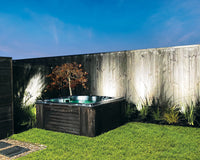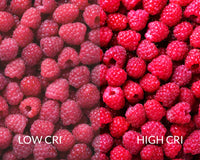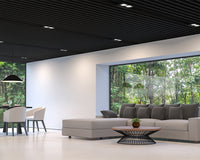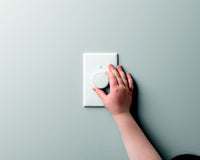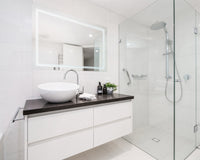Article Author: Wattson All-Lights
I get my fair share of questions about retrofit upgrades and why components don't seem to last. Here is what I've learned about LEDs and what you need to know about heat dissipation when using LED components.
As lighting technology advances, many businesses and homeowners are upgrading their lighting systems to energy-efficient LEDs. However, when retrofitting existing fittings, especially those using halogen or fluorescent technology, there are critical thermal considerations that can’t be overlooked.
Why Heat Management Matters for LEDs
Unlike older technology light sources, LEDs are highly sensitive to heat. If they’re not properly cooled, their performance, colour stability, and lifespan will deteriorate significantly and earlier than the designed “expected lifespan”.
Demystifying LED Heat Dissipation Requirements
One of the biggest misconceptions about LEDs is that, because they’re low-wattage and cool to the touch, they don’t require proper heat management. While it’s true that LEDs produce less radiant heat compared to halogen or incandescent lamps, they still generate significant heat at the junction (the core where light is produced).
The difference is that LEDs don’t radiate heat outward like older technologies; instead, heat builds up inside the semiconductor and must be conducted away through a heatsink. If this heat isn’t managed, it can lead to:
- Reduced light output (LEDs will dim as temperatures rise).
- Colour shifts that affect the quality of the light.
- Shortened lifespan, sometimes by thousands of hours.
In other words, the fact that an LED feels “cooler” when touched doesn’t mean it’s protected from overheating. The internal heat needs to be dissipated efficiently, which is why heatsink design, thermal conductivity, and airflow are essential.
1. Understand the Heat Load Differences
Halogen and fluorescent fittings are designed to handle high temperatures, but they aren’t necessarily built to keep LEDs cool. LEDs operate at lower temperatures overall, but they are far less tolerant of thermal build-up. if you’re retrofitting from halogen or fluorescent to LED, make sure the heatsink in your current fixture is capable of handling the LED’s thermal load.
2. Check Thermal Conductivity
Thermal conductivity refers to a material's ability to transfer heat. The most effective heatsinks are made of materials such as aluminium or copper. These metals quickly move heat away from the LED’s core, maintaining a safe operating temperature. If your existing fitting uses low-grade metal materials, damaged metals, or plastic components, it likely won’t provide sufficient thermal management. Just a reminder that an component can only perform as well as the environment that it’s being put in!
3. Consider Ambient Operating Conditions
Where the light fitting is installed matters; high ambient temperatures, such as those found in commercial kitchens or industrial environments, require greater heat dissipation. A small heatsink that may work well in a cool, ventilated room may fail in a warmer environment. Always consider whether the surrounding environment warrants a larger or more efficient heatsink.
4. Airflow Is Critical for All LED Components
LEDs need airflow to stay cool. Many older fittings, particularly those with enclosed or sealed designs, were designed for halogen or fluorescent lamps that handled heat differently. Installing an LED lamp or module in an enclosed fixture without sufficient ventilation can lead to overheating and early failure. Always ensure the design of the fitting allows heat to escape or opt for a product rated explicitly for enclosed spaces. This includes pendants that take lamps; the pendant may not have been designed with LEDs in mind!
5. Inspect for Damage or Corrosion
If the existing luminaire or heatsink is damaged or corroded, it’s not worth the risk. Structural wear can affect heat transfer and safety. In these cases, upgrading the entire fitting, not just the light source, is often the smarter and more cost-effective choice.
6. Using Magnets? Don’t Forget Thermal Paste
Magnetic clips are a popular way to secure LED modules during retrofits. However, they create a small air gap that reduces thermal conductivity. To solve this, apply thermal paste or thermal pads between the LED module and the heatsink. This fills the gap and ensures heat is efficiently transferred, helping to maintain long-term performance.
Final Thoughts
LED retrofits offer excellent energy savings and modern lighting performance, but only if the thermal design is right. From lamps to modules, every LED component relies on effective heat management and airflow. Without it, performance and longevity suffer.
By carefully assessing heatsink materials, airflow, and installation conditions, you’ll protect your investment and ensure your new lighting lives up to expectations. If you’re unsure whether your current fittings are suitable, speak to a qualified lighting professional. But if in doubt, we recommend a full upgrade instead of a retro, which may save you money in the long run!
Have some more questions? Feel free to reach out to our friendly team for more information:
Email: info@eurotechlighting.co.nz
Phone: 0800 688 229
Signing off for now









